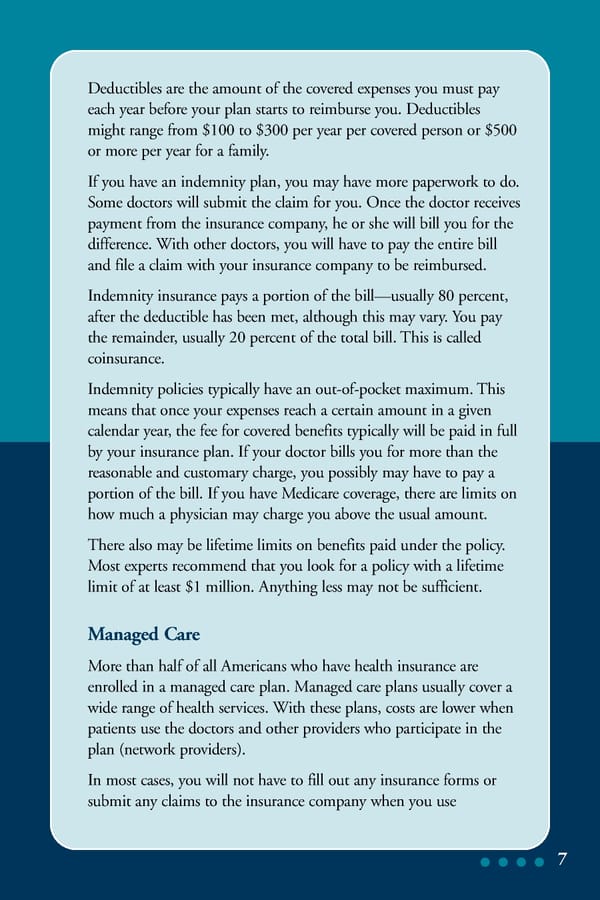Deductibles are the amount of the covered expenses you must pay each year before your plan starts to reimburse you. Deductibles might range from $100 to $300 per year per covered person or $500 or more per year for a family. If you have an indemnity plan, you may have more paperwork to do. Some doctors will submit the claim for you. Once the doctor receives payment from the insurance company, he or she will bill you for the difference. With other doctors, you will have to pay the entire bill and file a claim with your insurance company to be reimbursed. Indemnity insurance pays a portion of the bill—usually 80 percent, after the deductible has been met, although this may vary. You pay the remainder, usually 20 percent of the total bill. This is called coinsurance. Indemnity policies typically have an out-of-pocket maximum. This means that once your expenses reach a certain amount in a given calendar year, the fee for covered benefits typically will be paid in full by your insurance plan. If your doctor bills you for more than the reasonable and customary charge, you possibly may have to pay a portion of the bill. If you have Medicare coverage, there are limits on how much a physician may charge you above the usual amount. There also may be lifetime limits on benefits paid under the policy. Most experts recommend that you look for a policy with a lifetime limit of at least $1 million. Anything less may not be sufficient. Managed Care More than half of all Americans who have health insurance are enrolled in a managed care plan. Managed care plans usually cover a wide range of health services. With these plans, costs are lower when patients use the doctors and other providers who participate in the plan (network providers). In most cases, you will not have to fill out any insurance forms or submit any claims to the insurance company when you use 7
 Health Insurance Q&A Page 10 Page 12
Health Insurance Q&A Page 10 Page 12